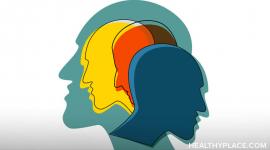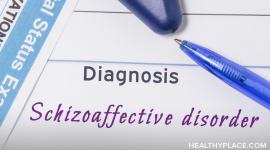What is the Treatment for Schizoaffective Disorder?

Because schizoaffective disorder is slightly different for each person who lives with it, the treatment varies a bit for everyone, too. The best schizoaffective disorder treatment is individualized, tailored to fit each person and his or her symptoms.
Doctors take into consideration the type of the schizoaffective disorder (schizoaffective disorder bipolar type or schizoaffective disorder depressive type) as well as the severity of symptoms to create an appropriate treatment plan for the best possible outcome.
General Schizoaffective Disorder Treatment Options
In most cases, doctors work with patients and families to create a comprehensive schizoaffective disorder treatment plan. The plan outlines specific, individualized schizoaffective disorder treatment goals and objectives. For some people, the goals might include returning to work and living independently. For others, the goals might involve avoiding hospitalization in a state facility. Goals are established based on the severity of someone’s psychotic and mood symptoms.
General approaches to treating schizoaffective disorder include:
- Schizoaffective disorder medications
- Psychoeducation
- Various types of therapy
- Life skills training and vocational rehab
- Electroconvulsive therapy (ECT); typically used only when someone doesn’t respond to other treatments
People can be treated in both inpatient and outpatient facilities. In some cases, hospitalization is necessary to provide round-the-clock support, supervision, and medication regulation. In other instances, people can receive schizoaffective disorder treatment through office visits and regular appointments.
There is no single standard for treating this illness. There are, however, schizoaffective disorder treatment guidelines that doctors follow:
- A combination of the treatment types listed above is preferred over just one, as people respond better to multiple approaches
- Medication is almost always, if not always, the primary form of treatment for this brain-based illness
- The individual must be the main factor in making treatment decisions
Let’s take a closer look at schizoaffective disorder treatment options, starting with medication.
Schizoaffective Disorder Treatment: Medication
Once someone is diagnosed with schizoaffective disorder, the first type of treatment given is medication. Many hope that medication is a cure for schizoaffective disorder. Unfortunately, a schizoaffective disorder cure doesn’t exist—at least not at this time. For now, medication is used to soothe and stabilize the brain so that other treatment approaches can work, and someone can function and live well with schizoaffective disorder.
Doctors prescribe many different types of antipsychotics, mood stabilizers, and antidepressants to reduce psychotic symptoms, stabilize mood, and relieve depression. According to the National Institute of Mental Health,
- 87% of people with schizoaffective disorder are prescribed two or more types of psychotropic medication
- 93% are prescribed an antipsychotic
- 48% receive prescription mood stabilizers
- 42% take an antidepressant
Can schizoaffective disorder be treated without medication? In the vast majority of cases, medication is necessary because it works within the brain, at the root of the disorder.
Once a medication has reduced mania or improved depression and muted psychotic symptoms like hallucinations, the person taking the medication is ready for additional schizoaffective disorder treatments.
Schizoaffective Disorder Treatment: Non-Medication Approaches
Psychoeducation is one of the most important aspects of treatment. When people learn about their illness, they are better able to recognize signs of relapse. Understanding the role of medication and other treatment makes people more likely to comply with their treatment plan and avoid relapse.
Individual, family, and group therapies have also been shown to be effective in treating schizoaffective disorder. Each of these plays a part in helping people make plans and goals, express frustrations, improve close relationships, and improve social skills.
Life skills training and vocational rehabilitation (voc rehab) help people living with schizoaffective disorder to live as independently as possible, manage money, and find and keep jobs.
Doctors, hospitals, and community centers often have resources available to help people find these services. Organizations like the National Alliance on Mental Illness (NAMI) and the Depression and Bipolar Support Alliance (DBSA) often can point people to resources and even offer classes and support groups of their own.
Can Schizoaffective Disorder be Cured?
Can schizoaffective disorder be cured? It can’t at this time. That doesn’t mean, however, that one is doomed to a low-quality life because the prognosis for schizoaffective disorder is good. Treatments are available, and long-term treatment for schizoaffective disorder helps people manage all of their symptoms over time. Getting and complying with proper treatment can even cause the illness to go into remission. It is possible to live a quality life with this disorder.
APA Reference
Peterson, T.
(2021, December 27). What is the Treatment for Schizoaffective Disorder? , HealthyPlace. Retrieved
on 2026, January 3 from https://www.healthyplace.com/thought-disorders/schizoaffective-disorder-information/what-is-the-treatment-for-schizoaffective-disorder



